Qualcomm Snapdragon 8 Elite, in essence, is a regular update to the company’s line of older mobile chipsets, which were previously designated by the three-digit number 8xx (up to 888), then began to be called 8 Gen X (up to 8 Gen 3), and now this is completely a fresh name—and a somewhat embarrassing one. As if we are not talking about a truly fresh Qualcomm chip, but about an overclocked (“elite”) version of an existing one. This naming can be explained both by the company’s desire to emphasize breakthrough power and completely new cores (less likely), and by the desire to avoid the four in the name, which always greatly confuses Asian, in this case specifically Chinese, companies (more likely).
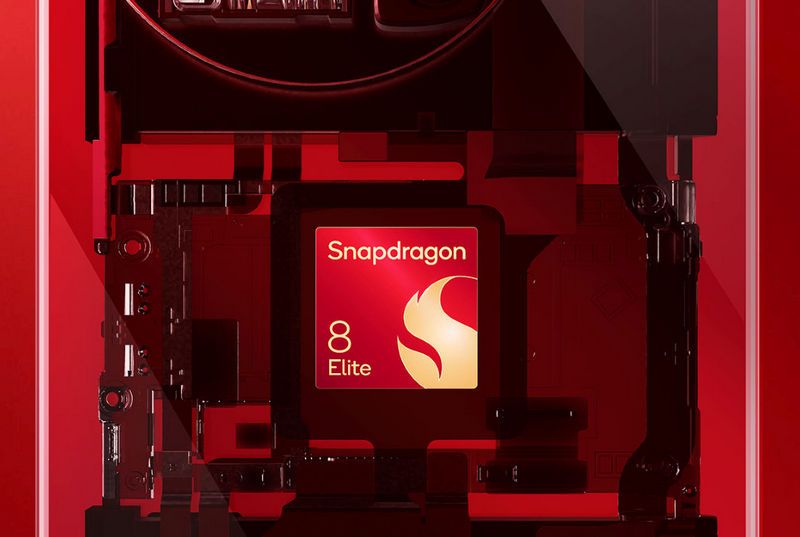
Image source: Qualcomm
Now let’s talk about the architecture of Qualcomm Snapdragon 8 Elite. This is the company’s first platform with a 3 nm technological process and the company’s first mobile (an important clarification) platform with its own Oryon cores, previously presented in Snapdragon X computer processors. There are eight of them, divided into two clusters: two older cores Oryon V2 Phoenix L clock with a frequency of 4.32 GHz and six Oryon V2 Phoenix M with a frequency of up to 3.53 Hz. The frequencies themselves, not to mention the type of cores (for the first time the company is moving away from ARM Cortex, even modified ones) speak of the very serious power of the new platform – the manufacturer promises up to a 45% increase in computing power compared to its predecessor. Each cluster is supplemented with a 12 MB second-level cache.
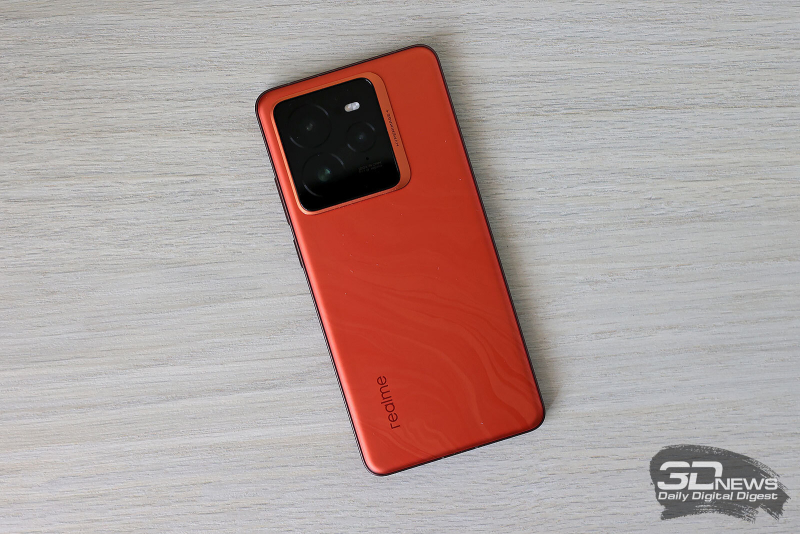
Realme GT 7 Pro
The graphics subsystem is Adreno 830, it is characterized by a special “chopped” architecture, thanks to which a specific part of the system is used to solve a specific task (which one is decided by the control processor built into the Adreno 830). Thanks to this, the graphics can avoid accessing shared memory, using its own cache (the same 12 MB) and, in theory, power consumption is greatly reduced. They promise a 40% performance increase compared to its predecessor, and energy savings relative to 8 Gen 3 can be up to 27%. Let’s add about hardware support for the Unreal 5.3 engine (with Nanite). Well, we can test the performance and energy efficiency of the realme GT 7 Pro right now.
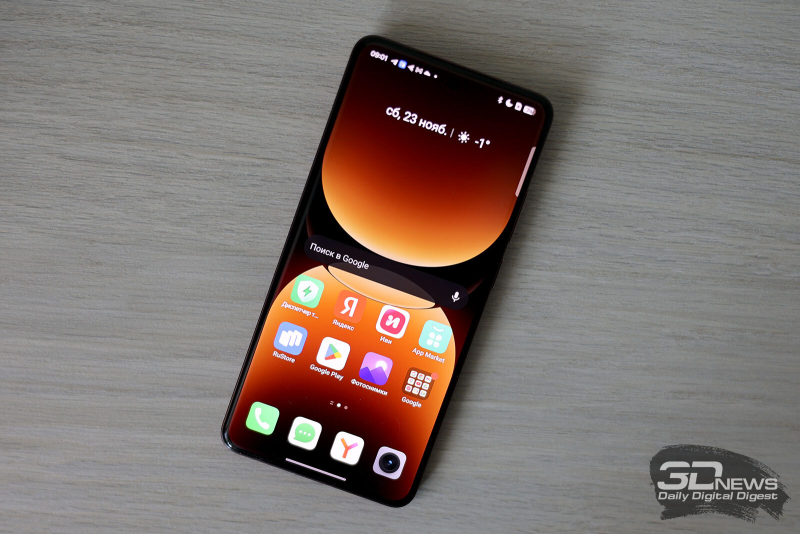
Realme GT 7 Pro
But first, a few words about the rest of the platform: the new AI engine Hexagon NPU with a built-in “multimodal generative AI assistant” (whose impact on the realme GT 7 Pro experience is minimal – at least for now), an improved signal processor for image processing, a Snapdragon X80 5G modem (also improved on all fronts, but, as you understand, we have no way to evaluate 5G communications) and FastConnect 7900 system, combining Wi-Fi 7, Bluetooth 5.4 and UWB in one 6-nanometer chip. There is support for LPDDR5x (RAM) and UFS 4.0 (non-volatile) memory.
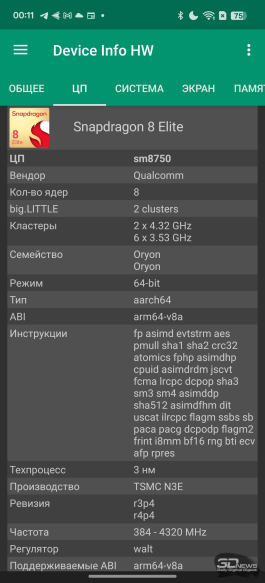
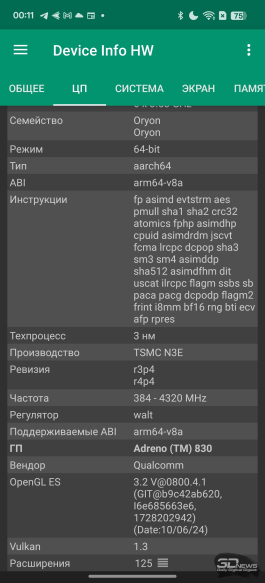
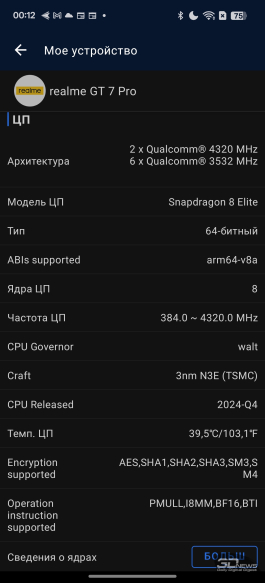
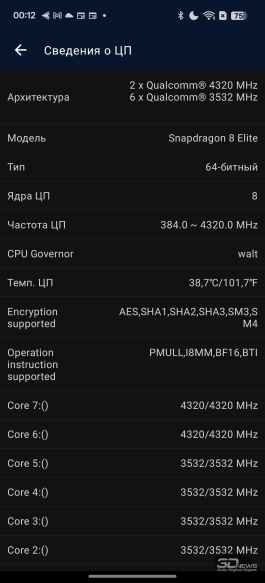
Well, let’s move on to the tests. It’s worth first identifying the remaining parameters of the realme GT 7 Pro smartphone: 12 (+12) GB of RAM + 512 GB of flash. Everything, accordingly, is the fastest to date.
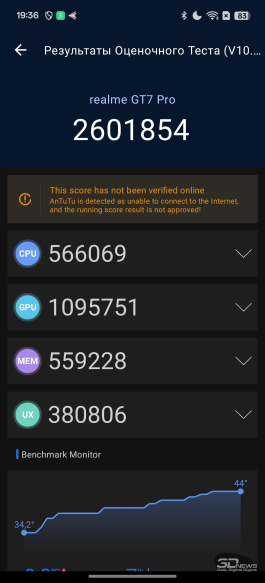
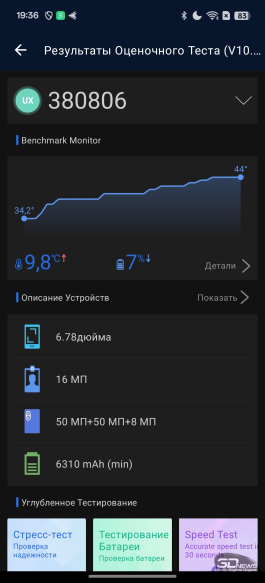
The basic and most comprehensive benchmark for any smartphone is, of course, AnTuTu 10. And in it, the Qualcomm Snapdragon 8 Elite scores 2,601,854. Needless to say, this is a record for today – with a huge lead over both the 8 Gen 3 and from Apple A18 Pro and the previous record holder for “parrots in Antutu”, MediaTek Dimensity 8300.
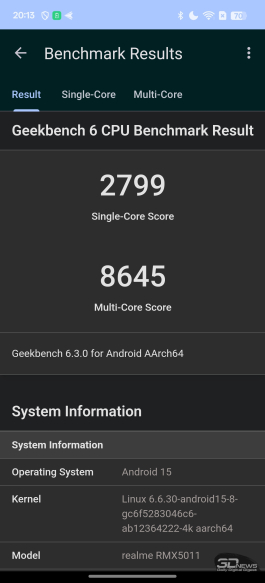
In the pure processing power test (Geekbench 6), the results are not quite as amazing, but still impressive – 8645 on multi-core processes is a serious level.
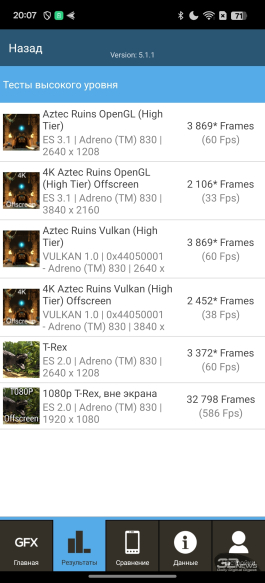
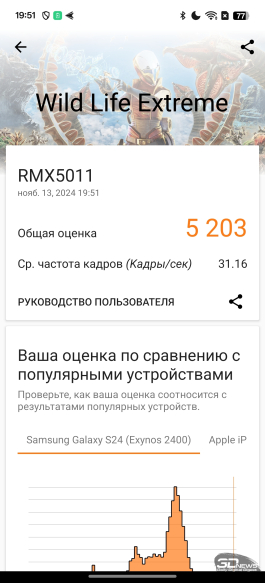
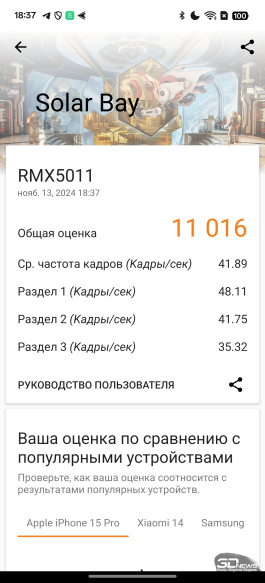
In graphics tests (3DMark in different guises, GFXBench), as in AnTuTu, we see very powerful numbers. That is, we can conclude that Qualcomm did not exaggerate about the sharp increase in power from the use of not only fresh Oryon cores, but also from Adreno 830 graphics.
But such serious power is associated with significant heating – and, alas, tests (and simple tactile impressions) confirm previously received data about this platform. The smartphone could not complete a single resource test from the Qualcomm package (despite the declared advanced cooling system) due to overheating. And during testing in AnTuTu 10, the case heated up to 44 degrees Celsius – this is not yet a critical value, but working with the smartphone is already uncomfortable.
At the same time, the manufacturer promises to soon slightly improve the situation with new firmware.
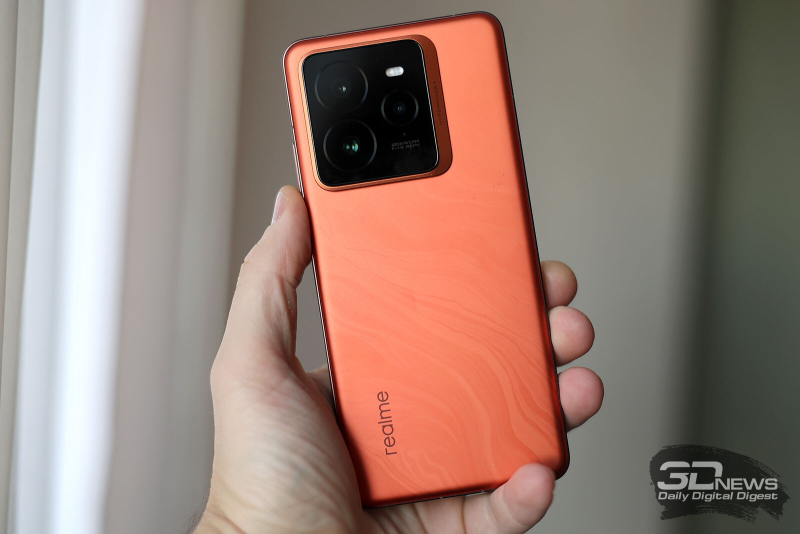
Realme GT 7 Pro
This, of course, affects gaming – there will be no problems with the frame rate in current games launched with maximum graphic settings, even significant throttling will not affect the process in a negative way, the power reserve is gigantic. But under load, the smartphone really gets hot, and playing on it for a long time can be uncomfortable.
And finally, about energy efficiency. The smartphone really works for a long time on one charge – even under serious load (games, video shooting) it does not actively “eat” the battery. But objective conclusions are impossible here – realme GT 7 Pro is equipped with a battery of as much as 6300 mAh, and it is impossible to completely attribute the good “survivability” of the gadget to the merits of the processor.